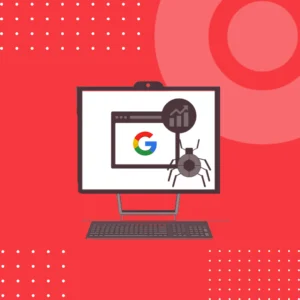Google Updates Crawl Budget Docs for Large Sites with Differing Mobile and Desktop Pages and Links

Introduction
Google has recently updated its crawl budget documentation, focusing on websites that maintain different versions for mobile and desktop users. The update emphasises a key best practice of ensuring that all links present on your desktop version are also available on the mobile version. For large websites that use separate HTML for mobile and desktop pages, following this new guideline is vital for optimal site performance in Google’s search engine rankings.
Google introduced a new bullet point in its crawl budget documentation, specifically addressing websites that use different HTML structures for their mobile and desktop versions. This update reinforces the need to provide the same set of links on both versions of your site to avoid issues with page discovery and indexing.
This change highlights the need for consistency between the two versions, particularly because Google uses mobile-first indexing, meaning Google primarily crawls and indexes the mobile version of a website.
(Source)
What is a Crawl Budget?
Crawl budget refers to the number of pages that Googlebot, Google’s web-crawling bot, can and will crawl on your website within a given timeframe. It is especially important for large websites with thousands of pages, as managing the crawl budget helps ensure that new and updated content is discovered and indexed by Google in a timely manner.
For large sites, inefficient use of the crawl budget can lead to delayed indexing, which negatively impacts your site’s search engine optimization (SEO) performance.
Why Ensuring Link Parity Matters for Crawl Budget
The core issue addressed by Google in this update is the inconsistency between mobile and desktop versions in terms of internal linking. If your mobile site does not have the same links as your desktop site, Google may miss out on discovering important new content.
Here is how this impacts your site’s SEO:
-
Slower Discovery of New Pages
If your mobile version lacks the same internal links that are present on your desktop version, Google’s mobile-first indexing will not be able to discover and crawl those pages as quickly. This can result in a slower indexing process for newly published content, which may prevent those pages from ranking in search results in a timely manner.
-
Reduced Crawl Efficiency
Google allocates a limited crawl budget for each site, especially for larger websites. If your mobile version lacks vital links found in the desktop version, Googlebot may need to spend more time crawling, impacting the efficiency of the crawl. This could also mean important pages are skipped or delayed in being indexed.
-
Increased Risk of Missing Pages in Indexing
Since Google indexes the mobile version of pages, any missing links or content discrepancies between mobile and desktop versions can result in Google not crawling and indexing certain pages at all. This could hurt your search visibility, particularly for new or updated pages.
How to Address This Issue
It is essential to follow Google’s updated best practices to avoid slowdowns in page discovery and crawl inefficiencies. Here are the steps you can take to ensure your site is optimised for Google’s crawling:
-
Ensure Consistent Internal Linking Across Mobile and Desktop Versions
Review your website to confirm that the internal links present on the desktop version are also available on the mobile version. If you are using different HTML structures for the two versions, ensure that the mobile version mirrors the desktop version as closely as possible in terms of internal linking.
-
Use Responsive Web Design
One of the easiest ways to avoid discrepancies between mobile and desktop versions is to use a responsive web design. Responsive design ensures that the same HTML is used across all devices, reducing the risk of missing links or content when viewed on mobile. This approach also simplifies website management and improves user experience across all devices.
-
Update Your Sitemap Regularly
If it is not possible to have identical links on both versions of your site, ensure that all important URLs are included in your XML sitemap. Google uses your sitemap to discover new pages, so having an updated sitemap can help speed up the indexing process for any pages that may not be directly linked on your mobile version.
-
Audit Your Site for Mobile-First Indexing
Since Google primarily uses the mobile version for indexing, it is important to audit your site from a mobile-first perspective. Tools like Google’s Mobile-Friendly Test and Search Console can help you identify any issues with mobile usability and ensure that all important pages and links are present.
Why Did Google Add This Update?
Google introduced this update to help website owners understand the importance of having consistent internal linking across both desktop and mobile versions. Since Googlebot only crawls the mobile version of a site under the mobile-first indexing system, any missing links on the mobile version can result in slower discovery and indexing of new content.
Google specifically highlighted this for large websites that use separate HTML versions for mobile and desktop, where missing links on the mobile version could cause significant crawl and indexing delays.
Why SEO Expert Should Care
For an SEO expert , especially those managing large websites, this update is a vital reminder that link consistency plays a pivotal role in crawl budget efficiency and content discovery. If your site’s mobile version lacks the same links as the desktop version, it could have a direct impact on your site’s visibility in search engine rankings.
By following Google’s updated best practices and ensuring link parity between your mobile and desktop versions, you can avoid delays in content discovery, improve crawl efficiency, and maintain a strong presence in search results.
Conclusion
Google’s latest update to the crawl budget documentation emphasises the need for consistent internal linking between mobile and desktop versions of large websites. In today’s mobile-first indexing environment, ensuring that your mobile version contains all the necessary links is essential for efficient crawling and fast content discovery.
For optimal SEO performance, make sure to review your site for link consistency, adopt a responsive design if possible, and keep your sitemap up to date. By taking these steps, you will be able to maximise your site’s crawl budget and ensure faster indexing for your content.
While the crawl budget is primarily determined by Google based on the size, popularity, and health of your site, you can improve your crawl budget by optimising your site’s performance. This includes reducing server errors, improving page load times, updating your sitemap regularly, and ensuring efficient internal linking. The better your site’s health and popularity, the more efficiently Google will crawl it.
You can use Google Search Console to monitor how Google is crawling and indexing your site. In the “Crawl Stats” report, you will see how many pages Googlebot crawls per day, the time spent downloading a page, and any crawl errors. If you notice crawl inefficiencies or slow indexing, it may be a sign that your mobile and desktop versions are not in sync or that you need to improve your internal linking and sitemap.
Yes, Google’s crawl budget update is particularly important for larger websites that maintain separate mobile and desktop HTML structures. On larger sites with thousands or millions of pages, any inefficiencies in crawl budget management, such as missing links on the mobile version, can significantly slow down the discovery of new pages and impact SEO performance. Smaller sites are less likely to be affected because Google can crawl them more quickly.





